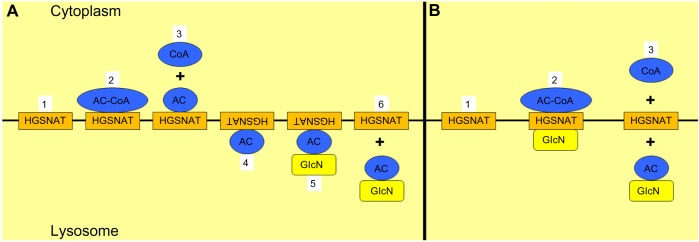Figure 1.
Proposed models for the mechanism of heparan acetyl CoA: α-glucosaminide N-acetyltransferase (HGSNAT) activity.
Notes: (A) HGSNAT (1) acquires acetyl CoA from the cytoplasmic side of the lysosomal membrane (2), and is itself acetylated at an active site histidine (3). A conformational change allows for the transfer of the acetyl group into the lysosome (4). Once heparan sulfate interacts with the active site, the terminal glucosamine residue of heparan sulfate (GlcN) acquires the acetyl group (5), thus forming N-acetylglucosaminide (6). Data from previous studies.76–78,80 (B) HGSNAT (1) catalyzes its reaction via a random ternary order complex (2), so that the process requires only one step, and no direct acetylation of the enzyme as an intermediate (3). Data from previous studies.79,81

